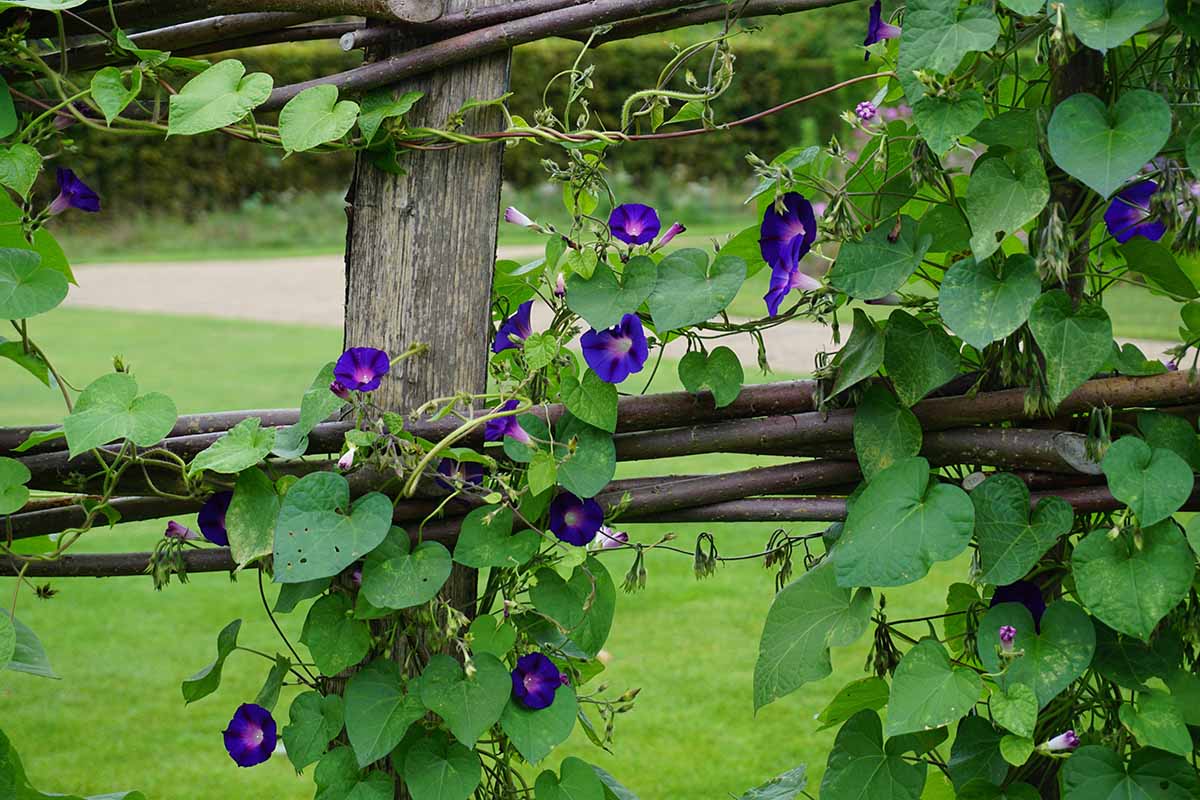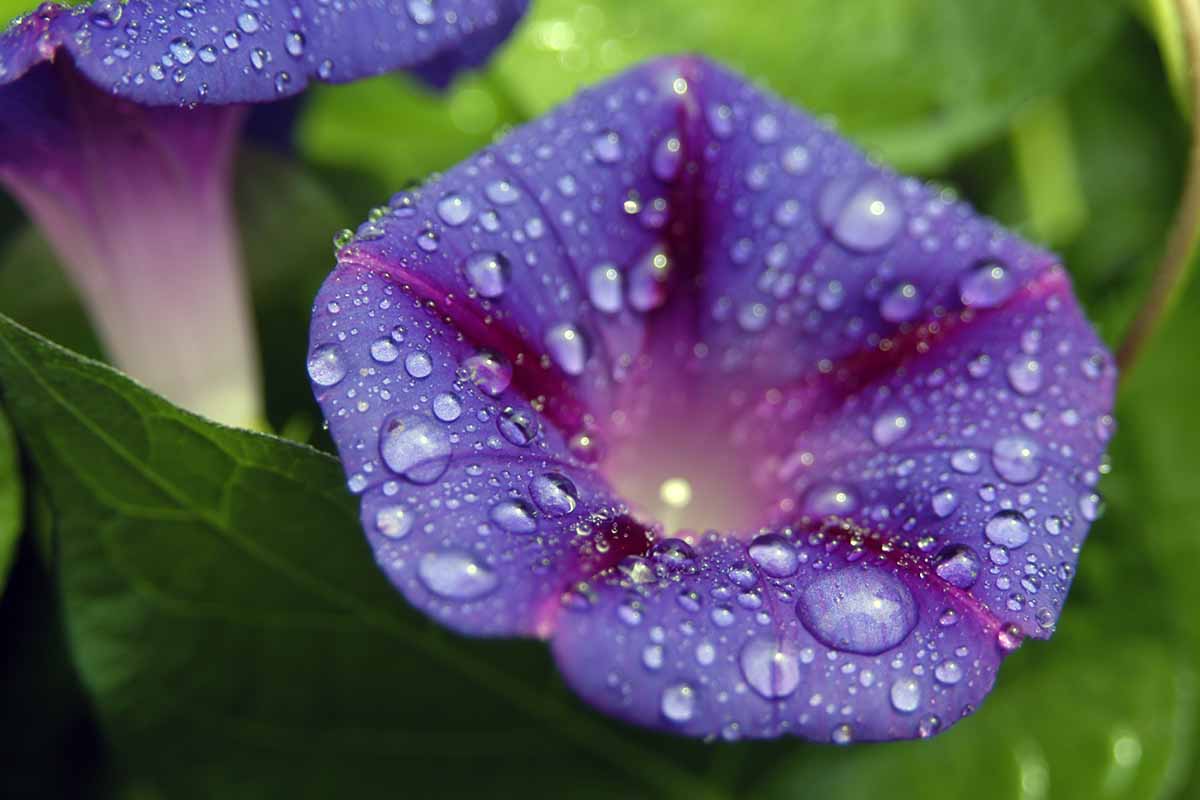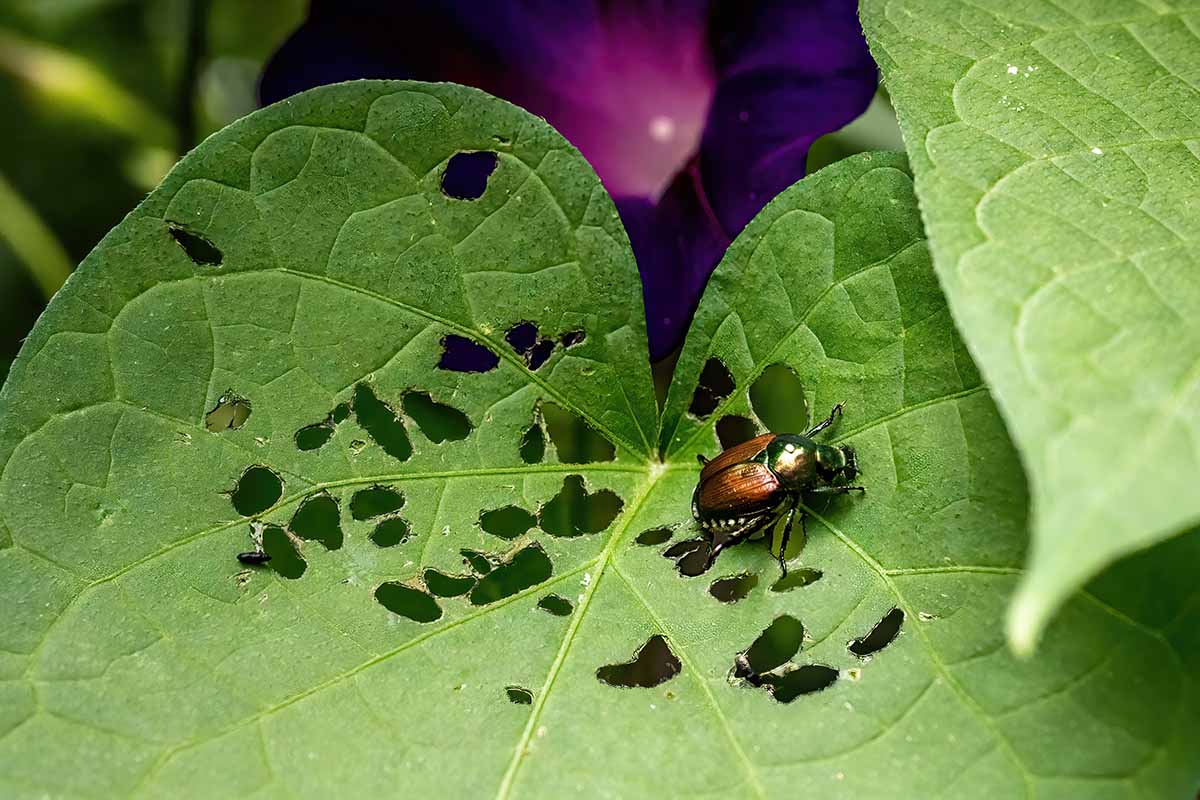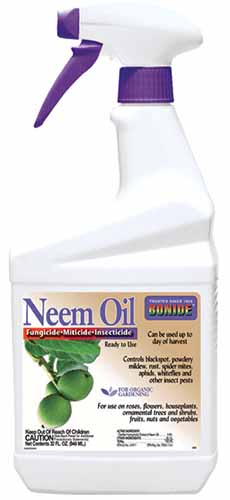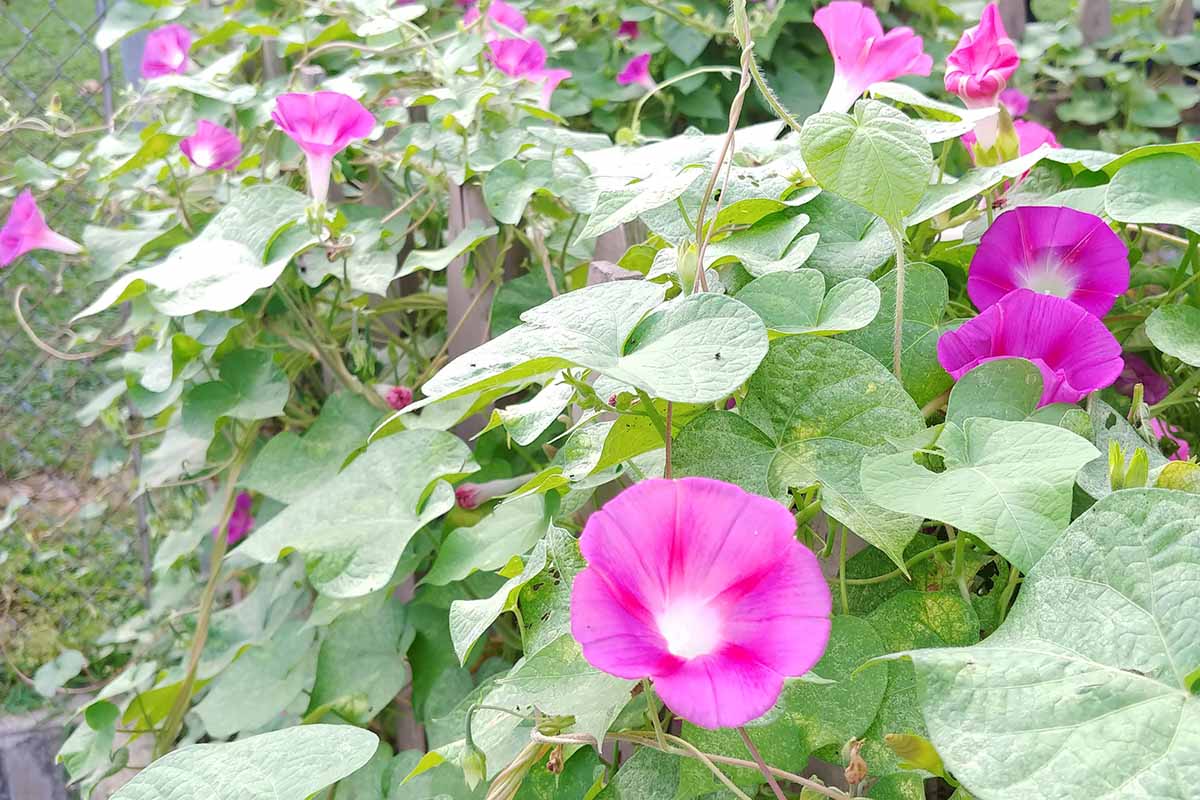We link to vendors to help you find relevant products. If you buy from one of our links, we may earn a commission. The focus of this article is seven common causes of a failure to bloom and how to avoid them. Here’s the lineup: Let’s jump right in and get this problem solved.
1. Disease
Black rot and rust are two common diseases that may adversely affect morning glory blooms. Inhibit both by sowing seeds in well-draining soil. Space them per seed packet directions to accommodate mature dimensions and facilitate airflow. An excellent way to do this is to train each seedling to grow up a string attached to a fence or another structure you want it to climb. Mature vines benefit from periodic untangling and redirecting as needed. Avoid under- and overwatering, as both render plants vulnerable to disease.
2. Hungry Herbivores
One reason you may not see flowers is that hungry wildlife may have eaten them before you look out in the morning. I couldn’t believe it when I spotted one of the local groundhogs clinging to a chain-link fence and munching away on the vines intertwined in it. Sow strong-smelling herbs nearby, like lavender, oregano, and rosemary, to deter herbivores. And if you have a hairdresser friend, ask for some sweepings to sprinkle around the plants to dissuade nibblers with human scent.
3. Inadequate Sunlight
These early bloomers grow best in full sun, where fresh buds open and flower each morning. They live for one day, and the next morning, there is a new batch. Plants in shady placements do not perform as well as those in full sun and are likely to produce fewer flowers. When scouting garden sites, look for those that receive at least six hours of sunlight daily for the best outcome.
4. Moisture Stress
When plants don’t receive the proper amount of water, the foliage may turn yellow. This cautionary color is often confusing, as it may indicate overwatering or underwatering. Flora suffering from moisture stress directs its energy toward survival, slowing vegetative and reproductive growth. Such energy-saving measures may reduce flower production. Evaluate the recent weather and your watering habits to determine probable causes. Adjust watering as needed to provide one inch per week, including rain. If oversaturation is a problem, consider mixing some horticultural grade sand into the garden soil per package instructions to improve drainage if it’s an ongoing issue.
5. Organically-Rich Soil
I. purpurea prefers poor soil. Under fertile conditions, plants are likely to produce an excess of lush foliage and few to no flowers. An overabundance of leaves may be especially problematic when plants are fertilized with nitrogen-rich products that promote foliar growth. Avoid pampering. Choose hardscrabble locations where the soil is not rich and loamy, and skip the fertilizer.
6. Pests
I. purpurea may fall victim to pests like aphids, Japanese beetles, leaf miners, and spider mites. And while they generally feed on foliage, these pests may also damage buds and blooms – especially in the case of a severe infestation.
7. Self-Sown Progeny
I. purpurea is a robust self-sower. In my growing zone, the seeds that self-sow will winter over and sprout the following year. If you see aphids, dislodge them with a strong spray of water from the hose. Handpick Japanese beetles and destroy them by crushing or dropping them into a pail of soapy water. You may need to use an insecticide for persistent aphids, leaf miners, and spider mites. Organic neem oil is an excellent choice. Bonide Neem Oil You can pick up Bonide Neem Oil from Arbico Organics. To avoid pests, keep the garden weeded, try not to under- or overwater, and space plants generously for good airflow. Fresh seeds from a reputable seller offer the best opportunity for high-volume blooming. Those that sprout via self-sowing may be less vigorous, producing sparse foliage and flowers. The pink ones in the photo above were the progeny of the progeny of a family member’s harvested seeds. And while they produced flowers, the blooms were less plentiful each successive year. Why not make the most of their ability to turn backyard eyesores into flower-laden focal points by masking them with a profusion of blossoms from summer through fall? When growing I. purpurea, please note that it can become invasive. To limit self-sowing, pick and discard seed pods when they are green and use a hoe to churn up and dispose of unwanted seedlings in early spring. In addition, the seeds are toxic, so do not consume them under any circumstances. What will it be? Blue, pink, purple, white, or a bicolor combination? Let us know in the comments section below! Whatever you choose, a glorious display awaits. If you found this article informative and would like to further your knowledge of morning glories, we recommend the following guides next:
15 of the Best Common Morning Glory Varieties for Home GardenersHow to Grow Morning Glory Vines in ContainersHow and When to Prune Morning Glory Vines

